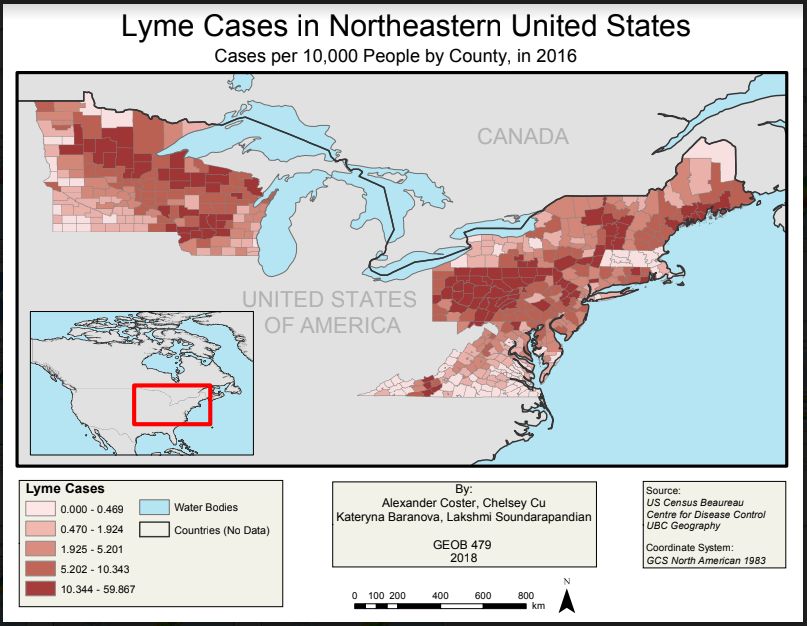Our final project focused on the statistical modelling of suitable habitats for black-legged ticks, the primary host and vector of Lyme disease, in 14 states of the northeastern United States. We used MaxEnt to develop three distinct models, and projected climatic variables onto predicted environmental conditions in 2050 to study how suitable habitat ranges will shift over time due to climate change.
Despite the relatively low accuracy of our models, significant insight was gained in the potential for tick ranges to shift northward. This presents a formidable health concern for northern US states and eastern Canada, where tick populations have historically been kept in check by temperature and precipitation extremes. Lyme disease has the potential to become a major Canadian health concern in the future.
